Life: AD 317 – 361
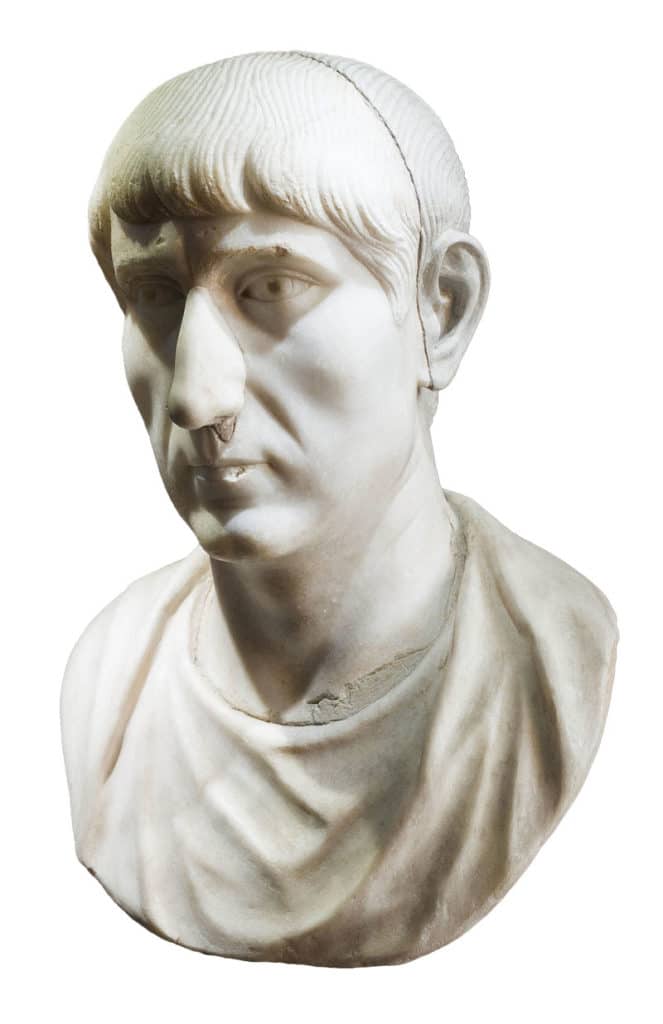
- Name: Flavius Julius Constantius
- Born in August AD 317.
- Became emperor in AD 337.
- Died at Mopsucrene in Cilicia, AD 361.
Early Life
Constantius II was born in Illyricum in August AD 317, the son of Constantine the Great and Fausta, and was proclaimed Caesar in AD 323. In AD 337, at the death of his father Constantine, he acceded to the throne, together with his two brothers Constantine II and Constans. But this accession by the three brothers was tainted by the murder of their cousins Dalmatius and Hannibalianus, whom Constantine had also intended as joint heirs. These murders are believed to have been masterminded by Constantius II.
With the eventual division of the empire between the three brothers, Constantius II received the east as his dominion, which largely corresponded with what his father had originally intended for him. It appears that Constantine the Great had held Constantius II in high esteem and had deemed him most able to deal with the menace of the Persians in the east. Almost at once after the news of Constantine’s death, the Parthian King Sapor II (Shapur II) attacked the empire, with which he had been at peace for four decades.
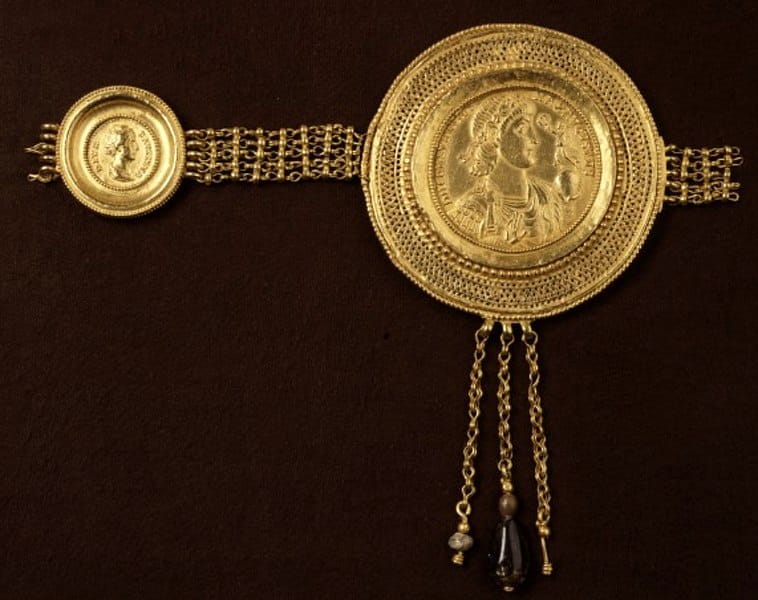
Deteriorating Relationship with his Constantine II
In AD 338, Constantius II granted Constans control over his European territories, Thrace and Constantinople. Perhaps he thought it necessary to satisfy the ambitions of his younger brother by granting him more land, thereby securing his western border in order to be able to freely engage with Sapor II in the east.
In any case, by AD 339 Constans, whose relationship Constantine II was deteriorating, handed back control of the very same territories to Constantius II in order to assure his allegiance in the upcoming contest with Constantine II.
Personal Beliefs and Ideology
Much like his father before him, Constantius II was deeply involved in theological matters. He supported Arianism, a form of Christianity including aspects of Greek philosophy, which the ‘Nicene Creed‘ brokered by his father had outlawed as heresy. Had Arius been excommunicated by Constantine’s Council of Nicaea, then Constantius II rehabilitated him posthumously.
These religious sympathies of Constantius II at first led to grave disagreements between himself and his brother Constans, who, like his father, strictly adhered to the Nicene Creed, which for a while created a real threat of a war between the two.
The conflict in the east with Sapor II concentrated almost entirely on the strategic fortresses of Mesopotamia. Three times, Sapor II besieged the fortress town of Nisibis but failed to take it. Then, by AD 350, the Parthian king needed to agree on a truce with his Roman foe in order to deal with tribal problems in the east of his own empire.
Meanwhile, Constantius II had become the sole legitimate Roman emperor. Had Constantine II declared war on his brother Constans in AD 340, he died in the attempt to invade Italy. Meanwhile, Constans himself had been slain when Magnentius usurped his throne in AD 350.
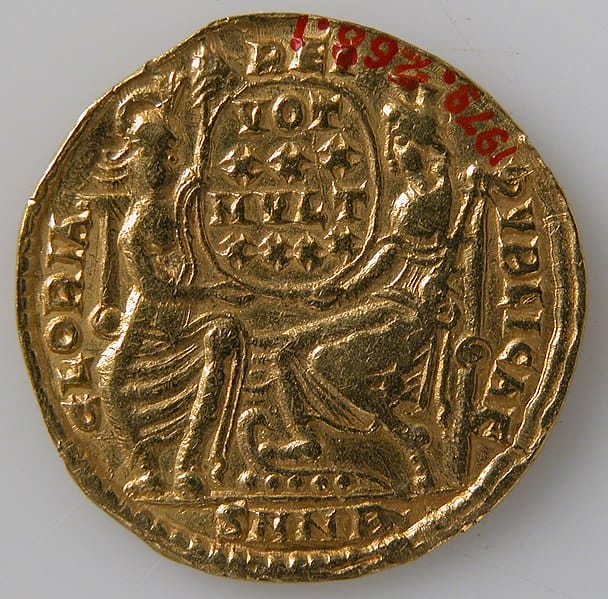
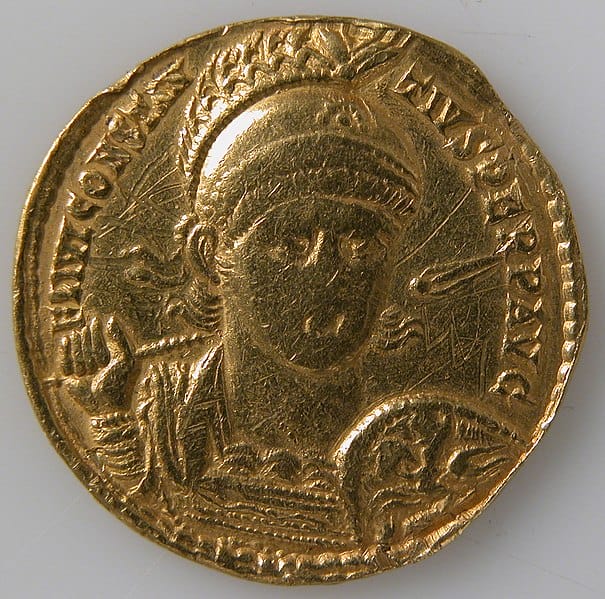
The Retreat of Vetranio
Things hung in the balance for a while as the all-important Danubian legions could simply not make their minds up about which one of the two rivals to support. And so, in a strange twist of fate, they chose neither leader but instead hailed their own ‘Master of Foot,’ named Vetranio, as their emperor. Though rebellious as this might seem at first sight, it appeared to be in accordance with Constantius II. His sister Constantina was in Illyricum at the time and appeared to have supported Vetranio’s elevation.
It all appears to have been a ploy by which the Danubian legions would be prevented from joining with Magnentius. For before the year was over, Vetranio had already relinquished his position and declared for Constantius II, formally handing over command of his troops to his emperor at Naissus. Afterward, Vetranio simply retired to Prusa in Bithynia.
Constantius II, preparing for the fight with Magnentius in the west, raised his 26-year-old cousin Constantius Gallus to the rank of Caesar (junior emperor) in order to have him take charge of the administration of the east while he would be commanding his armies.
The Defeat of Magnentius
What followed in AD 351 was an initial defeat by Magnentius at Atrans, as Constantius II tried to advance and force his way into Italy. As Constantius II retreated, Magnentius sought to follow up his victory but was heavily defeated at the grueling battle of Mursa in Lower Pannonia, which cost over 50’000 soldiers their lives. It was the bloodiest battle of the fourth century. Magnetius withdrew to Italy, seeking to rebuild his army.
In AD 352, Constantius II invaded Italy, forcing the usurper of his brother’s throne to withdraw further west into Gaul. In AD 353, Magnentius was once more defeated and lost control of the Rhine frontier, which was subsequently overrun by barbarians. Seeing that his position was by then utterly hopeless, Magnentius committed suicide.
Constantius II, The Sole Roman Emperor
Constantius II was left as the sole emperor of the Roman Empire. But news reached him of his cousin Gallus’ behavior in the eastern provinces. Had he successfully dealt with rebellions in Syria, Palaestina, and Isauria, Gallus had also ruled as an utter tyrant, causing all manner of complaints to the emperor. So in AD 354, Constantius II summoned Gallus to Mediolanum and had him arrested, tried, condemned, and executed.
Next, Constantius II needed to deal with the Franks, who had broken over the border during his struggle with Magnentius. So confident was the Frankish leader Silvanus that he proclaimed himself emperor at Colonia Agrippina. Silvanus’ murder was soon arranged, but the ensuing confusion saw the city sacked by German barbarians.
Constantius II assigned Julian, his cousin and the half-brother of Gallus, to deal with the troubles and to restore order. For this he elevated Julian to the rank of Caesar (junior emperor) and gave him his sister Helena in marriage. Constantius II then visited Rome in the spring of AD 357 and then moved north to campaign against the Sarmatians, Suevi, and the Quadi along the Danube.
Troubles in the East
It wasn’t long before Constantius II was once again needed in the east, where the Persian king Sopr II had broken the peace yet again. Had in his last war Sapor II been repulsed in his attacks on the fortress cities of Mesopotamia, then this time he was to meet with some success. Amida and Singara both fell to his armies in AD 359.
Hard pushed by the Parthian assault, Constantius II asked Julian to send some of his Western troops as reinforcements. But Julian’s soldiers simply refused to obey. They suspected in this demand only Constantius II’s jealousy toward Julian’s success in the West. The soldiers believed that Constantius II sought only to weaken Julian so that he could deal with him with greater ease once he had brought the Persian war to an end.
These suspicions were not without foundation, as Julian’s military successes in the West did indeed win him little else but the ill will of his emperor. Some scholars even believe that it went so high that it is possible that these actions by Jilian were where designs on Julian’s life were made at the time.
Death of Constantius II
Instead of complying with their emperor’s orders, the army in the West proclaimed Julian Augustus. Julian, even though reluctant to take the throne, accepted this honor. Constantius II, therefore, left the Mesopotamian frontier and marched his troops west, seeking to deal with the usurper.But as he reached Cilicia in the winter of AD 361, he was overcome by a sudden fever and died at Mopsucrene.
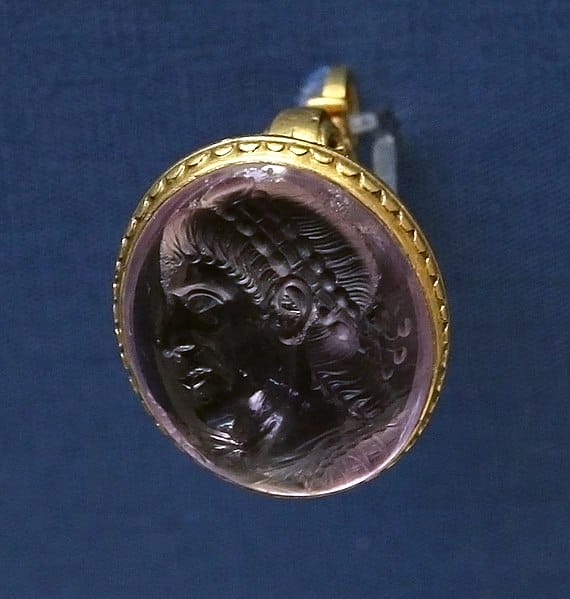
People Also Ask:
What is Constantius II known for?
As emperor, Constantius promoted Arian heresy, banned pagan sacrifices, and issued laws against Jews. His military campaigns against Germanic tribes were successful: he defeated the Alamanni in 354 and campaigned across the Danube against the Quadi and Sarmatians in 357.
How long did Constantius II rule?
Constantius II ruled the Roman Empire between 337 and 361 CE. He was the second son of Constantine the Great and Fausta. Constantius was a devout follower of Arianism Christianity.
Who was the emperor after Constantius II?
But, before the clash could come, Constantius died near Tarsus (November 361), having on his deathbed accepted the inevitable by bequeathing the empire to Julian.
What were the religious policies of Constantius II?
The religious policies of Constantius II were a mixture of toleration for some pagan practices and repression for other pagan practices. He also sought to advance the Arian or Semi-Arianian heresy within Christianity.
When did Constantius II reign?
Constantius II, son of Constantine the Great, ruled the Roman Empire between 337 and 361 CE. Constantius’ reign is characterized by a series of political and cultural upheavals and is rightly viewed as a time of significant change in the history of the fourth century.
Who did Constantius II defeat in the Battle of Mursa?
Battle of Mursa (Sept. 28, ad 351) – defeat of the usurper Magnentius by the Roman emperor Constantius II. The battle entailed losses on both sides that severely crippled the military strength of the Roman Empire; it is known as the bloodiest battle of the century.

Historian Franco Cavazzi dedicated hundreds of hours of his life to creating this website, roman-empire.net as a trove of educational material on this fascinating period of history. His work has been cited in a number of textbooks on the Roman Empire and mentioned on numerous publications such as the New York Times, PBS, The Guardian, and many more.
